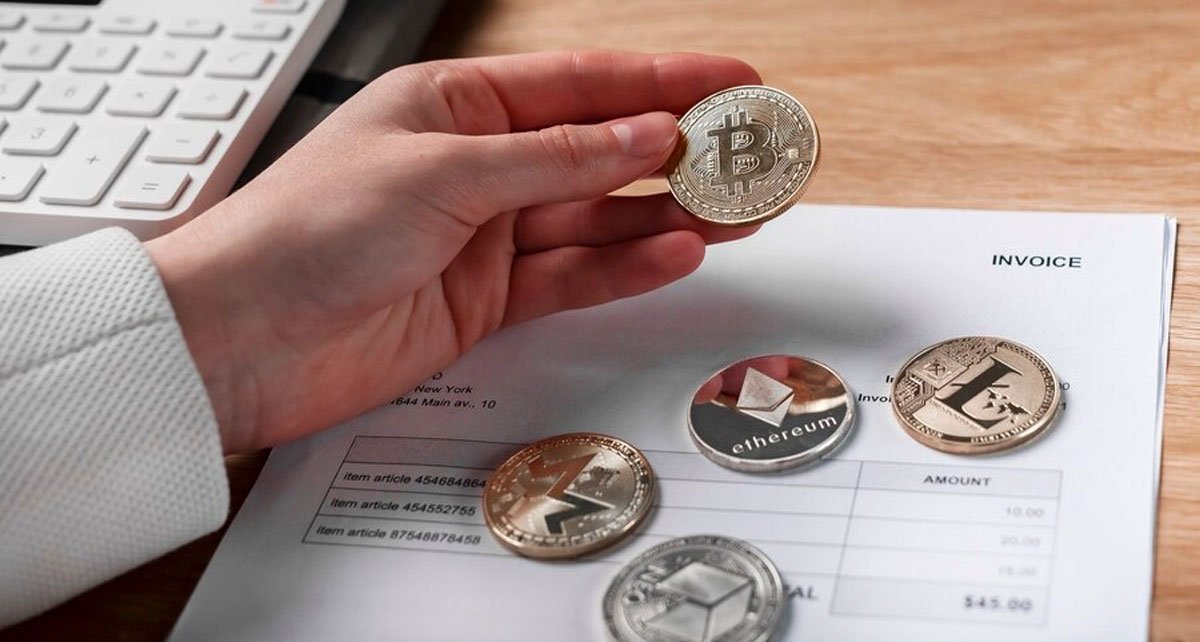Crypto
Understanding the Listing Process for Tokens on Crypto Exchanges
Published
1 year agoon
By
Admin
The development of the crypto infrastructure has revolutionized the financial landscape. Today, buying crypto is accessible to anyone with an internet connection. Businesses, too, can leverage this technology by integrating CaaS solutions (Crypto as a Service), enhancing their processes, and expanding their reach.
A critical aspect of the crypto ecosystem is cryptocurrency listings, which provide digital assets with the liquidity and visibility needed for broader adoption. This article explains the process of listing crypto on exchanges, the steps involved, and the factors influencing listings. So, let’s dive in and learn more!
Types of Crypto Listings
What Is Coin Listing? It is the process of adding a new coin to a crypto exchange. Here are some types of token listings:
- Initial Exchange Offerings (IEOs). In an IEO, a cryptocurrency exchange acts as the intermediary, conducting the token sale on behalf of the project. This process provides a platform for the token sale and instils confidence among investors due to the exchange’s involvement and due diligence.
- Direct listings. Direct listings involve the cryptocurrency being listed on an exchange without an intermediary token sale. This type of listing requires the project to have a strong reputation and sufficient community support, as no initial fundraising is involved.
- Security token offerings (STOs) are another way to list crypto, particularly for tokens classified as securities. STOs are subject to stringent regulatory requirements and are often backed by real assets. These tokens provide investors with legal rights similar to traditional securities. Listing a coin through an STO requires compliance with financial regulations, which can vary by jurisdiction. STOs appeal to investors seeking legally compliant and asset-backed investment opportunities in the crypto space.
- Governance tokens give holders the right to participate in a blockchain project’s decision-making processes. These tokens are crucial for decentralized applications (dApps) and decentralized autonomous organizations (DAOs) where community involvement is key. Listing governance tokens involves showcasing the project’s decentralized governance model and the benefits of community-driven decision-making.
- DEX Listings. Decentralized Exchange (DEX) listings represent a more decentralized approach to listing crypto. Unlike centralized exchanges, DEXs operate without a central authority, allowing users to trade directly with one another. This type of listing is particularly popular for projects prioritizing decentralization and avoiding the more rigorous and centralized listing processes of traditional exchanges.
The Process of Coin Listing
The process of listing on a crypto exchange involves several steps, each crucial for ensuring that the token meets the necessary standards and requirements:
- Application submission. The first step in the process is applying for the desired exchange. This application typically includes detailed information about the project, the team, the technology behind the coin, and the market strategy.
- Due diligence. Once the application is submitted, the exchange conducts thorough due diligence. This includes verifying the project’s authenticity, assessing the security of the underlying technology, and evaluating the token’s legal compliance.
- Technical integration. After passing the due diligence stage, the technical integration begins. This involves integrating the coin’s blockchain with the exchange’s infrastructure, ensuring compatibility and security.
- Testing and security audits. Before the official listing, extensive testing and security audits are conducted to ensure there are no vulnerabilities. This step is critical for safeguarding the exchange and its users.
- Marketing and promotion. Once the coin is listed, marketing and promotional activities are undertaken to attract traders and investors. This can include announcements, partnerships, and various promotional campaigns.
Factors Influencing Coin Listings
Several factors influence the decision to list a coin on an exchange:
- Project legitimacy. Exchanges look for projects with credible teams, clear use cases, and solid technology. The legitimacy of the project plays a crucial role in the listing decision.
- Market demand. High demand and community support can significantly boost a cryptocurrency’s chances of listing. Exchanges prefer tokens with a strong following and active trading interest.
- Compliance. Compliance with regulatory requirements is essential. Projects must ensure that they adhere to the legal standards of the jurisdictions in which they operate.
- Security. Exchanges prioritize tokens that demonstrate robust security measures and have undergone thorough audits.
- Partnerships and ecosystem. Projects that have established partnerships and are part of a broader ecosystem often have a better chance of being listed, as they bring additional value to the exchange.
Conclusion
Listing a cryptocurrency on an exchange involves carefully considering various factors such as technology, legality, and market strategy. Understanding the different types of crypto listings and the steps involved in this process is crucial for projects seeking visibility and liquidity for their digital assets. With the growing interest in cryptocurrencies and blockchain technology, listing plays a key role in shaping the future of the digital economy. By adhering to the standards set by exchanges and leveraging the proper listing methods, projects can effectively position themselves for success in the crypto sector.


Benefits of Partnering with an Expert Foundry

Choosing the Right Supported Independent Living Option for Your Needs

Why Companies Worldwide Are Hiring Power BI Developers

Experience Pure Android Gameplay with MuMuPlayer Emulator

A Guide To Solar PV For Homeowners

How to Convert a Historic Building into a Hotel: a 2025 Guide

How You Can Integrate AI into Your Small Business For Faster Growth

File Recovery on Android: Myths vs. Facts

Cooler, Safer, Clearer: Why Quality Window Tint Is a Smart Upgrade in 2025

How Medium-Sized Businesses Actually Handle Their Books

Carol Kirkwood’s Journey: Her Real Age, Husband, Career, and More

Revolutionizing Healthcare: The Emergence of AI-Driven Analytics

How Machine Learning and AI are Redefining the Future?

Aliza Barber: Meet Lance Barber’s Wife, Age, Life, Profile, Career and Net Worth

Evelyn Melendez: Jordan Knight’s Wife Bio, Marriage, Family, Career and Net Worth

Ilan Tobianah Biography: Family, Marriage, Lifestyle, Career and Net Worth

Who was Alice Marrow? Everything to Know About Ice-T’s and His Mother

King Von’s Autopsy Report: The Truth Behind the Tragic Death

Meet Otelia Cox: The Supportive Wife of Tony Cox – A True Fairy Tale Romance

Tea Leoni and Tim Daly Split – A Closer Look at Their Relationship and Breakup

Benefits of Partnering with an Expert Foundry

Choosing the Right Supported Independent Living Option for Your Needs

Why Companies Worldwide Are Hiring Power BI Developers

Experience Pure Android Gameplay with MuMuPlayer Emulator

A Guide To Solar PV For Homeowners

How to Convert a Historic Building into a Hotel: a 2025 Guide

How You Can Integrate AI into Your Small Business For Faster Growth

File Recovery on Android: Myths vs. Facts

Cooler, Safer, Clearer: Why Quality Window Tint Is a Smart Upgrade in 2025

How Medium-Sized Businesses Actually Handle Their Books
Category
Trending
-

 News3 months ago
News3 months agoCarol Kirkwood’s Journey: Her Real Age, Husband, Career, and More
-

 Health2 years ago
Health2 years agoRevolutionizing Healthcare: The Emergence of AI-Driven Analytics
-

 Technology2 years ago
Technology2 years agoHow Machine Learning and AI are Redefining the Future?
-

 Celebrity2 years ago
Celebrity2 years agoAliza Barber: Meet Lance Barber’s Wife, Age, Life, Profile, Career and Net Worth




